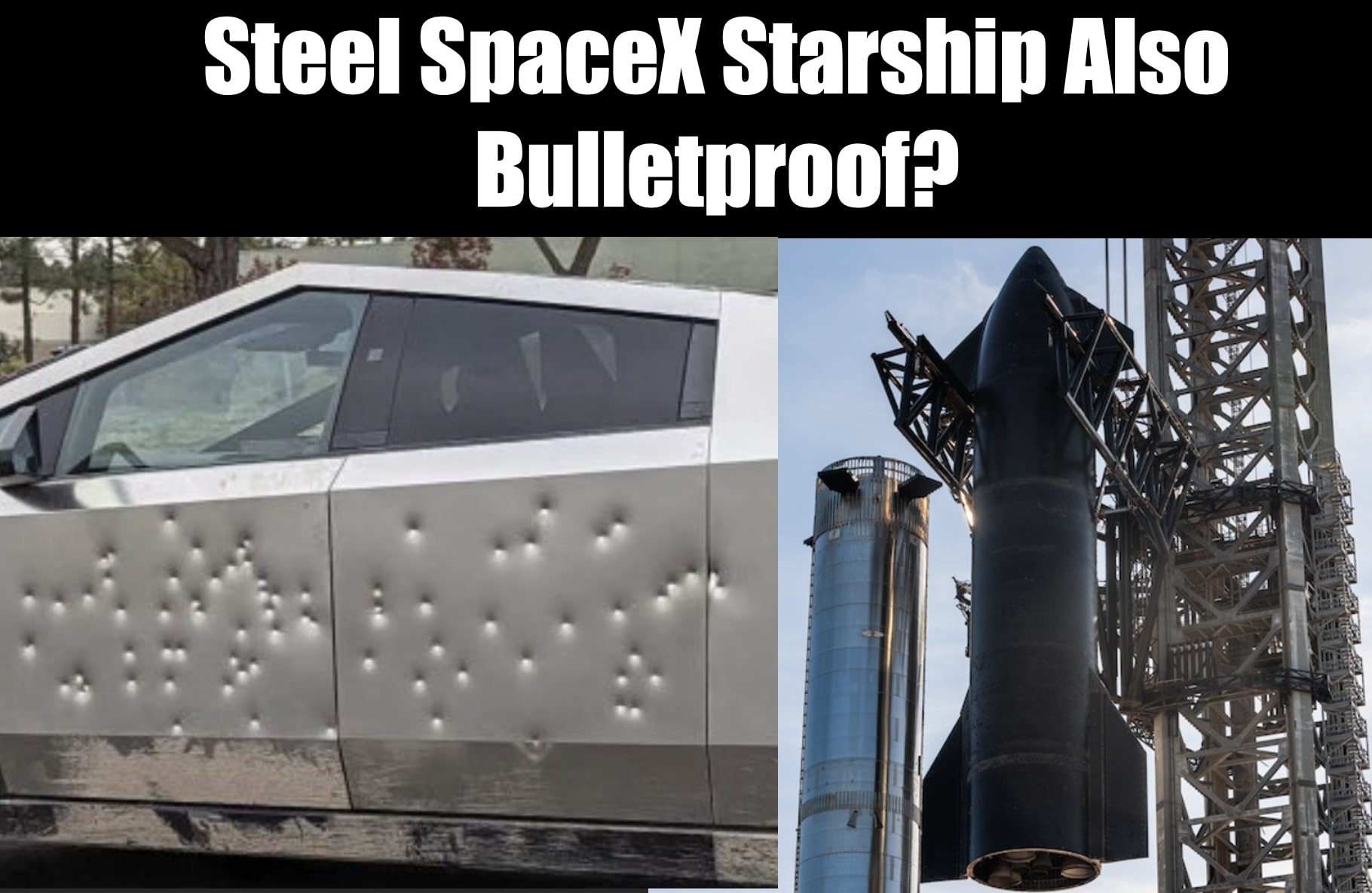The SpaceX Super Heavy Starship is made from stainless steel just like the new Tesla Cybertruck. The Tesla Cybertruck has a cold rolled process that converts the stainless steel to corrosion resistant Martensitic steel.
The Tesla Cybertruck will be mass produced with 250,000 to a million units per year.
The conversion of the austenitic stainless steel increases the hardness. Martensitic stainless steels have reduced chemical resistance when compared to austenitic stainless steels. Martensitic stainless steel is used when hardness is critical.
The SpaceX Super Heavy Starship will need to be re-used hundreds of times. It would seem that the hardness of Martensitic would not add weight but would make the Starship more resistant to damage from falling ice. Falling debris damaged the space shuttle.
Resistance to impact damage would be a good thing for Starship.
The space shuttle Columbia was damaged by a large piece of foam fell from the shuttle’s external tank and breached the spacecraft wing.


Brian Wang is a Futurist Thought Leader and a popular Science blogger with 1 million readers per month. His blog Nextbigfuture.com is ranked #1 Science News Blog. It covers many disruptive technology and trends including Space, Robotics, Artificial Intelligence, Medicine, Anti-aging Biotechnology, and Nanotechnology.
Known for identifying cutting edge technologies, he is currently a Co-Founder of a startup and fundraiser for high potential early-stage companies. He is the Head of Research for Allocations for deep technology investments and an Angel Investor at Space Angels.
A frequent speaker at corporations, he has been a TEDx speaker, a Singularity University speaker and guest at numerous interviews for radio and podcasts. He is open to public speaking and advising engagements.


Anyone seen crash data from the cyber truck, being bullet proof is cool, but of it doesn’t crumple like other cars that could be more of a concern.
I think you need to look back at what happened to the Shuttle.
A piece of ice saturated foam fell off the external tank, and damaged one or more of the leading edge thermal protection tiles on the wing. There wasn’t any structural damage to the underlying wing. There didn’t need to be. The wing could not survive without an intact thermal protection system.
During reentry the plasma formed by impacting the atmosphere acted like a cutting torch, slicing through the wing, and annealing the aluminum where it didn’t actually cut it. That led to the structural failure that rendered the Shuttle aerodynamically unstable, causing it to tumble and break up.
The Starship is a heavy enough gauge of stainless steel that, yes, it’s likely resistant to ordinary small arms fire. (Anti-materiel guns like a .50 BMG? Certainly not!) Busting up the thermal protection tiles, OTOH, while the result would likely not be as spectacular as with the Shuttle, would not be good. The Starship might or might not survive reentry with a single broken tile, depending on location. It probably would require substantial repairs if it did manage to land intact.
Unlike the Shuttle, which had a huge number of essentially unique shaped tiles, the tiles on the Starship come in a fairly small number of shapes. And they’re snapped on with spring lock retention. You could probably equip the Starship with a heat shield repair kit.
The space shuttle actually survived a broken heatshield incident before the Columbia disaster. Like Columbia, a piece of foam fell down and knocked off a peice of the heatshield. However, unlike Columbia, the uncovered area was actually an antenna that was not aluminum. The spacecraft survived reentry just fine. Aluminum has a very low melting point, unlike stainless steel. Starship will have much better chances even with a broken heatshield.
Sure, some areas of the heat shield on the Shuttle were largely unnecessary, but they just obsessively covered the whole thing except the windows. Starship, by contrast, only has heat shield where it’s expected to be needed, as a weight saving measure.
The real threat with a damaged heat shield on Starship is not localized damage, but the tiles zippering off once a tile leading edge is exposed to aerodynamic forces.
Once the aerodynamic forces are that high, it will already be past the point in the flight profile where stainless melts.
And losing one tile? Remember, the steel is a thermal conductor and it will sink the heat into the surrounding area.
I concur. The issue was damage to the tiles. Without the tiles, I doubt any sort of steel would survive. That said, the heat shield tiles on SpaceX are of just a few uniform sizes and shapes. Is a “repair kit” possible?